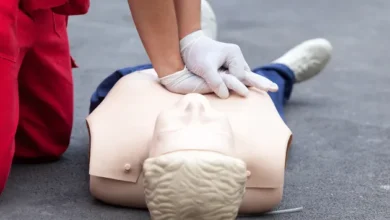Plastic Surgery: Are Facial Cosmetic Treatments Painful?

A facial cosmetic, also known as a rhytidectomy, is a cosmetic surgical operation aimed at rejuvenating the face. Extra facial skin is removed during this procedure, resulting in a more youthful-looking bottom part of the face.
It is possible to reduce “jowls” by performing a rhytidectomy, which removes excess skin from the jawline and tightens the area. Additionally, it can erase deep wrinkles around the lips and nose and extra skin and fat from the chin and neck.
As well as tightening underlying tissues, this therapy may be paired with surgery to enhance the forehead, cheeks, brows, and eyelid enhancing procedures. In 2016, 107,261 women and 13,702 men in the United States underwent cosmetic surgery. It was the fifth most popular procedure for men.
Plastic surgery
Plastic surgery is frequently performed as an outpatient treatment. General anaesthetic or local anaesthesia and sedatives may be used. The face plastic surgery might take anywhere from two to five hours, and the patient can usually go home the same day. As is customary in a typical facial, a surgeon creates an incision in the skin in front of each ear that extends up and behind each ear to reach the hair-bearing scalp. Skin is lifted from deeper face muscles and fat by the surgeon, who then gently pulls the skin upward and posteriorly to remove any extra. They may be able to tighten the face’s deeper tissues. The skin and deeper tissues of the neck can be tightened by making a tiny incision under the chin. A neck lift is a medical term for this procedure. Sutures and maybe staples are used to seal the wounds. One or two days may be necessary to eliminate excess blood and fluids from the skin behind the ear. The wounds are bandaged up.
New surgical techniques
Cosmetic operations are always being improved with the development of new methods. There are a lot of new procedures on the market that claim to be speedier and easier to recover from than standard facial cosmetics. Laser neck and jaw liposculpture and resurfacing is a neck-lifting technique in which lasers are used to shape and resurface the neck and jaw. A one-inch incision beneath the chin is used to administer a local anaesthetic during the procedure. Using a laser, the fat under the chin is melted, and the skin is tightened as it recovers. Face and brow lifts may be performed via endoscopy due to the smaller incisions made possible by the use of miniature cameras. Faster healing and reduced tissue damage resulting from this. Through minor incisions in the hairline at the front, the forehead skin can be lifted. It is elevated and attached to the deeper tissues to keep it from sagging or drooping. Liposuction can be used to eliminate fat bulges in the chin and neck region of the face. Depending on the patient’s needs, it can either be part of a facial cosmetic or an independent procedure.
Lower facial wrinkles and drooping skin can be addressed with a mini-facial cosmetic, a less invasive technique. There’s no way to fix the drooping neck or extra skin because of its narrow, S-shaped incision. Compared to a standard facial cosmetic, this procedure may leave less visible scarring and require less time to heal. Facial cosmetics are frequently performed in conjunction with other facial surgeries, such as blepharoplasty and brow lifts.
Complications
Facial cosmetic surgery complications are rare, and cosmetic procedures are generally safe if performed by a trained and experienced practitioner. Risks are inherent in every surgical procedure.
Some of the side effects of facial implant surgery include:
- Bleeding
- Bruising
- Complications of anesthesia
- The face nerves that regulate muscles can be damaged, but this damage is usually transitory.
- Hematoma.
- Infection.
- Hair loss near the incision site is rare, although it might occur.
- Nausea and tingling usually subside in a few days or weeks.
- Scarring.
- Tissue death or skin necrosis.
- Unbalance in the face’s two halves.
- The thickening or widening of a scar.
In the days following surgery, if the patient experiences irritation, pain, redness, or swelling, they should see a doctor. Infection may be the cause of a fever. In some cases, this could indicate the presence of an embolism or hemorrhage.
Recommendations
Before proceeding, however, it is recommended that the following issues be addressed and taken into account:
- To be a candidate for facial cosmetic surgery, a patient must have good mental and physical health.
- Complications are more common in patients with diabetes and high blood pressure.
- Anyone contemplating a facial cosmetic should give up smoking and other nicotine-containing items before getting one. The risk of problems following surgery increases if the patient smokes or uses tobacco products. Healing of wounds can be hampered by it.
- A facial cosmetic is not a cure-all for the ageing process; therefore, realistic expectations are crucial.
- The best outcomes can be achieved with good skin elasticity and bone structure.
- Patients should refrain from taking aspirin or other blood thinners for at least a week before surgery.
When undergoing cosmetic surgery, it is crucial to have reasonable expectations. The outcomes are frequently long-lasting.
Recovery
Almost all patients report some discomfort, but painkillers can alleviate it. At its worst after two days and last for a few days, bruising and swelling are common. After two to four weeks of recovery, most people are ready to return to strenuous activities. Five to ten days following surgery, the sutures are removed. There must be strict adherence to the bathing or washing bandages and incision guidelines. You must adhere to your doctor’s orders to expedite your recovery and ensure the best possible outcome.
For some time, numbness and muscle stiffness are to be expected. It can take up to a year for scars to fade and even out. Maintaining a healthy lifestyle with a well-balanced diet and regular exercise can also assist in keeping the skin looking its best. To maintain a youthful appearance of the skin and avoid premature ageing, it is important to avoid smoking, drinking, stress, sun exposure, and pollution. Facial cosmetic results can be preserved by adopting the same routines.
Conclusion
The authors suggest beginning injectable facial treatments with the first injection placed on the left side of the face and, whenever possible, using a high-G needle. This will help to reduce the amount of discomfort experienced by the patient.




